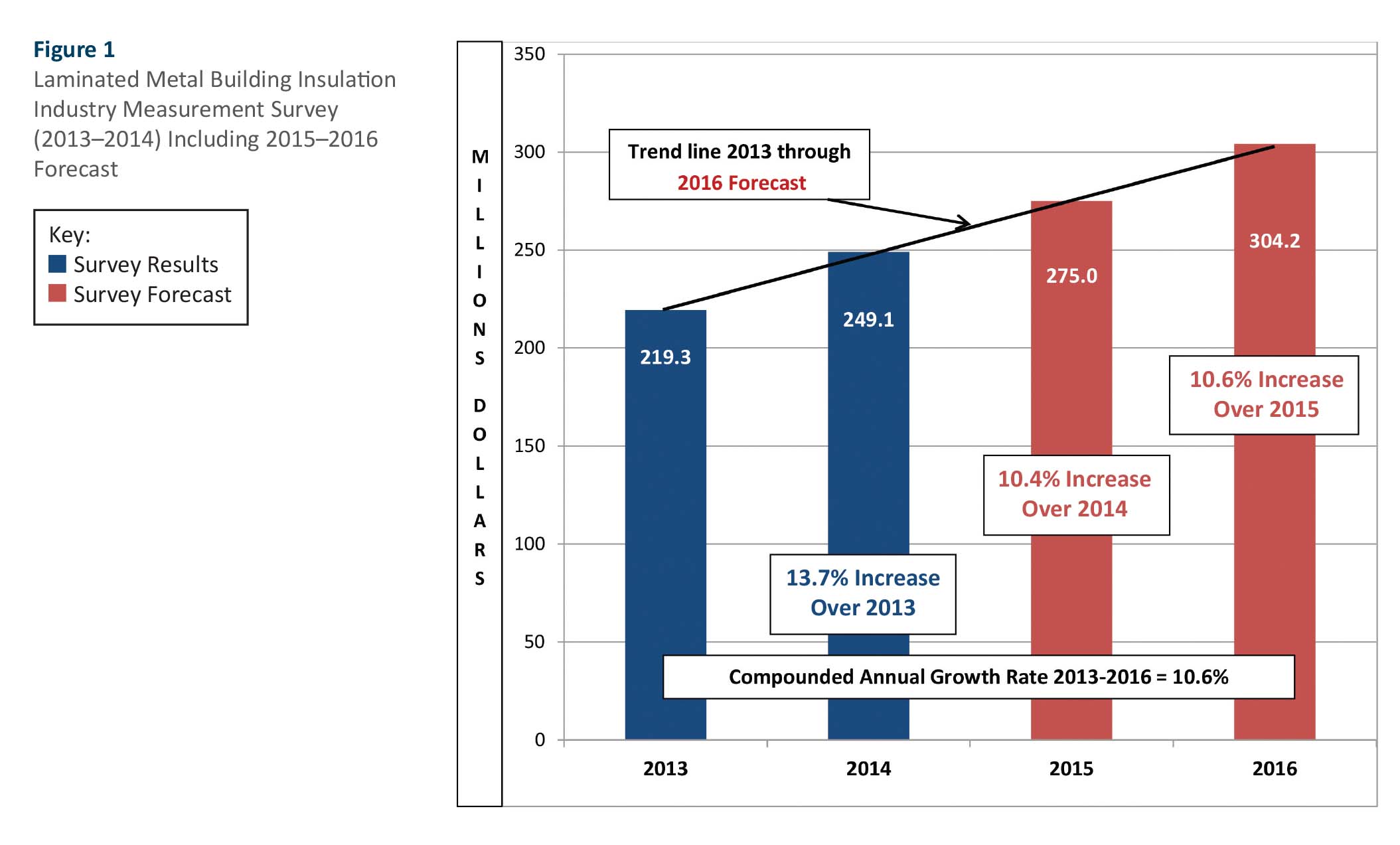Forecast Predicts Growth for Laminated Metal Building Insulation Market
The National Insulation Association (NIA) has conducted an industry-measurement survey for the mechanical insulation market since 1997. Laminated metal building insulation was previously excluded from that survey because it could not be applied to the survey methodology utilized for mechanical insulation. With the help of several metal building laminators, an approach and methodology for laminated metal building insulation was developed. The survey was sponsored by NIA’s Foundation for Education, Training, and Industry Advancement and its goal is to provide valuable data regarding market size and growth rates for the United States’ laminated metal building insulation market.
The NIA members who participated in the survey provided information to an independent, third-party company. The company took that information and applied a formula created by NIA to extrapolate the annual size of the laminated metal building insulation industry in the United States. The latest survey was conducted in the first quarter of 2015 to determine industry growth from 2012 through 2014, and to obtain an indication of growth for 2015 and 2016. Survey results indicate that the market is growing. As shown in Figure 1, the U.S. laminated metal building insulation market exceeded $249 million in 2014 (a 13.7% increase over 2013). The market is forecast to reach $275 million in 2015 (a 10.4% increase over 2014), and $304 million in 2016 (a 10.6% increase over 2015).

The survey included the following general definition for laminated metal building insulation products: all fiberglass insulation products and jacketing products sold by manufacturers for use in developing (fabricating/laminating) laminated metal building insulation systems. Using informal survey methods, the following were added to develop the final survey results: lamination accessory materials (adhesives, packaging, etc.), laminating labor, laminator margin, and delivery costs. The intent was for the survey to represent only laminated metal building insulation, but the methodology employed may have captured some allowance for liner-type products.
It is important to note that survey responses in regard to 2015 and 2016 forecasts varied from 6% growth to over 15%. Overall growth was expected in both units and dollars (price increases). On average, approximately 50% was from unit growth, which illustrates core industry growth or increased demand for products and services.
Survey results are always subject to individual interpretation. The following is information about the survey and potential takeaways that have been developed in conjunction with conversations before and after the tabulation of the survey data.
- The survey is based upon dollars, not units, and a consistent approach has been utilized. Based on the survey methodology, the results should represent a conservative number. The survey does not include all of the various products utilized in the metal building insulation market, nor has the potential impact of imported products outside North America been included.
- The survey is intended to show a national picture for the respective calendar year. Based upon observations, there are significant geographical and product variances to the survey results. This is not inconsistent with any survey of such a broad nature.
- Mechanical insulation and building insulation, including all accessory products, are excluded for the purposes of this survey.
- The 2015 and 2016 forecasts seem to be reasonably in line with the overall commercial construction market forecast. The forecast does not break out growth expectations between new construction, retrofits, or maintenance applications. Historically, a forecast of this nature includes a blend of each, with new construction being the largest percentage. Regardless, the growth forecasts are welcome news.
We should not undervalue the impact that NIA’s efforts and other industry educational and awareness initiatives have had on the industry. Without those efforts, the bottom of the recent recession may have been deeper, the recovery slower, and the growth trends not as promising.
Copyright Statement
This article was published in the July 2015 issue of Insulation Outlook magazine. Copyright © 2015 National Insulation Association. All rights reserved. The contents of this website and Insulation Outlook magazine may not be reproduced in any means, in whole or in part, without the prior written permission of the publisher and NIA. Any unauthorized duplication is strictly prohibited and would violate NIA’s copyright and may violate other copyright agreements that NIA has with authors and partners. Contact publisher@insulation.org to reprint or reproduce this content.
